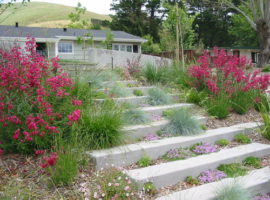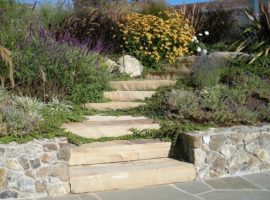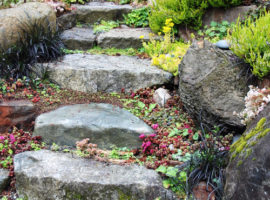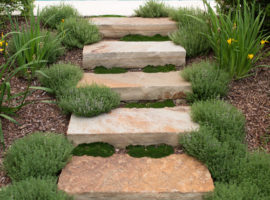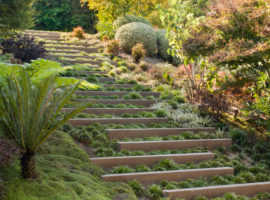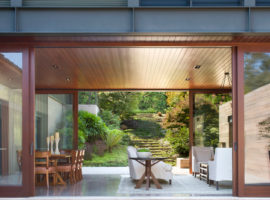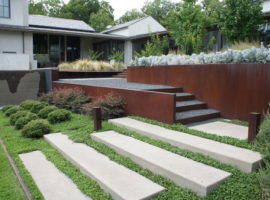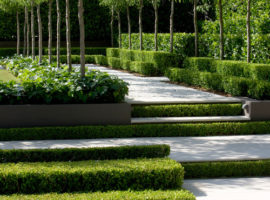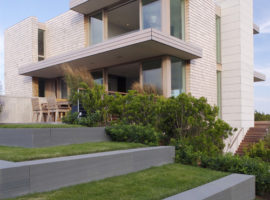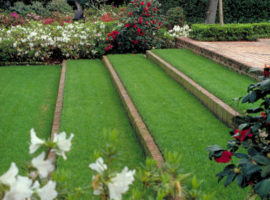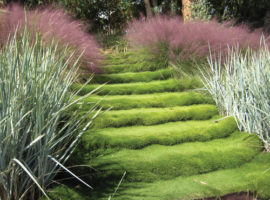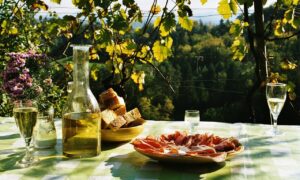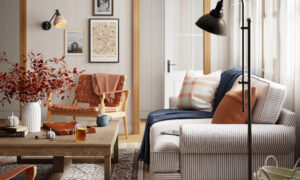Steps are an interesting and an artistic way to go up and down the garden slope. However, you don’t need to have them as boring and only meeting its functionality. They can also add to the overall look of the landscape by adding design ideas and elements of their own. Although you can add design with the help of stones and concrete yet, in some gardens, you can also utilize the steps for added aesthetic value.
There are many people who would like to use this idea, but are not sure how to use it exactly into their design. You can use a variety of ways like growing crevice specific plants that can breed on its own into the steps or blend the steps into the landscape. However, the only plants that we see on our garden steps are the weeds that need to be plucked out. But the good news is that if the weeds can find a happy home in this spot so can the other plants.
Avoid Tripping or Slipping Hazard

[Image – Huettl Landscape Architecture]
While it’s a great idea to grow plants on the garden stairs, you also have to ensure proper lighting and must be cleared of any plants to avoid any tripping. If there are people in your house with eyesight or mobility limitations, then this is all the more necessary for you to be careful when installing plants on your stairs. You can use the poured in place concrete steps that can be inter-planted with Santa Barbara Daisy as in this picture that not only beautifies the steps but also keeps it safe from any slipping hazard.
Allow the creeps to grow along the inner seam
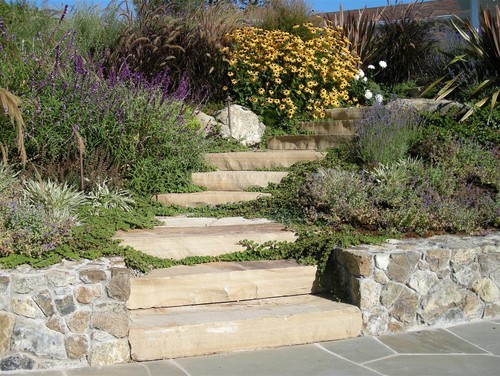
[Image -O’Connell Landscape]
In this image, the plants are grown on the sides of the cleft-stone steps and meet the stairs in the centre. The steps are fairly wide to allow easy risk-free passage making room for easy movement and the plants to grow along the tread. You can use plants like creeping Jenny, perennials like prostrate Veronica, wooly thyme, etc. You can prune these plants as per your needs and make them adjustable to the effect that you want.
Set steps within the plantation
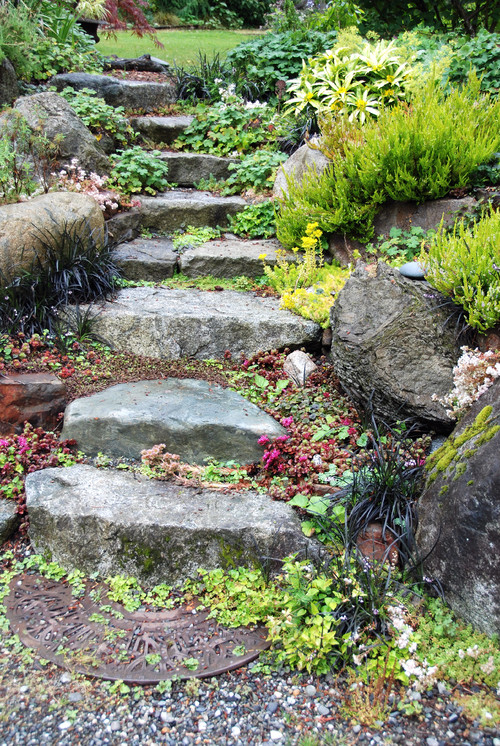
[Image -Exteriorscapes llc]
These stairs have been laid out like the stepping stones in the sedum plants that can easily grow in the conditions like that of granite stones. There are also other huge plants that settle in the gaps of the steps to cover the sides and the backs of the treads.
Hard Rock Look Softened by Plants
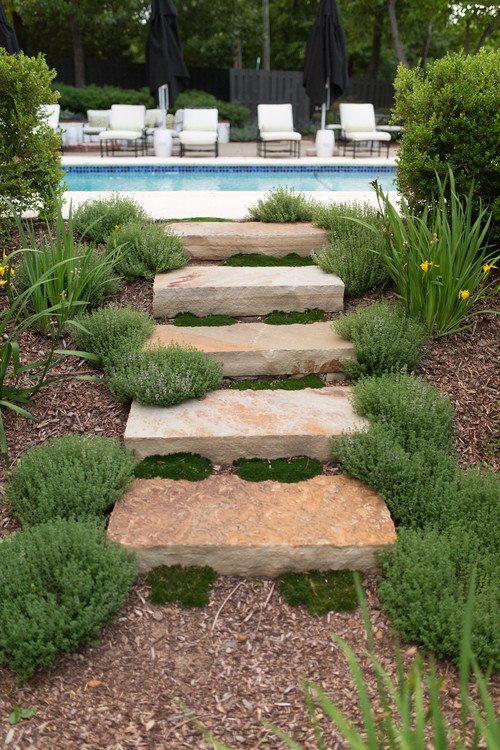
[Image -DK Design]
In this garden, a natural stone steps have been installed and the softness of the steps has been induced by growing plants in the crevices between the risers and the treads. There is also low planting in the adjoining area to complement the overall design. Certain space at the back of the tread has been left for the plants to grow naturally and unconditionally. This space needs to be provided with proper soil and compost with draining option for the plants to cultivate in a healthy manner. However, it is important to maintain the stability of the steps so it is important to ensure that there is no root of the plant growing under the step.
To make your garden steps look aesthetic, you need to choose the plants carefully and see the space that the plants need to grow to its full potential. It should also be able to support itself through the microclimatic condition as created by the crevice. Although the steps will act as a defence mechanism for these plants from direct heat, wind or rain, there are some plants that tend to store heat during the day and release it during the night. This is the reason you may need proper irrigation system to keep the plants suitably hydrated. Plants that can grow in these conditions are thyme, spring flowering plants like coral bells, etc.
Leave a space between treads for the plants to grow
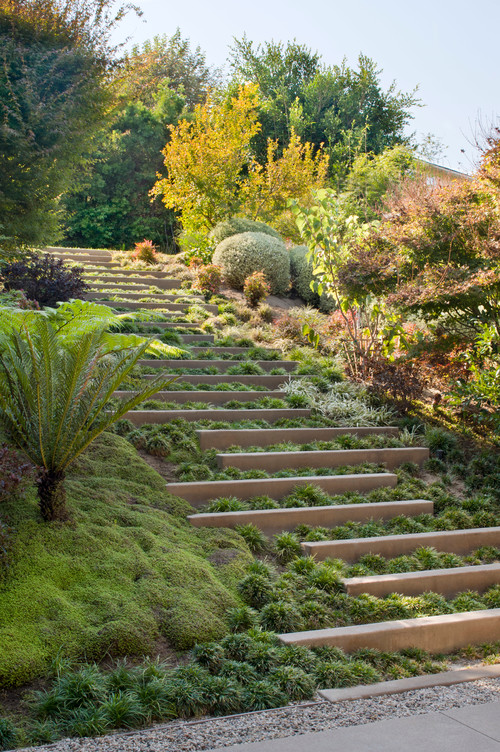
[Image -Kirkpatrick Architects]
Instead of making the plants grow from the sides, in this case, the space has been left between treads to allow for plant augmentation. Just add single species plant to the space and you can create uniformity of the design, as well as safe functionality of planted stairs. The plants that grow as clumps are ideal for this arrangement. You can consider planting variegated Japanese sedge or grass like big blue lilyturf. These plants are capable of withstanding direct light and foot traffic.
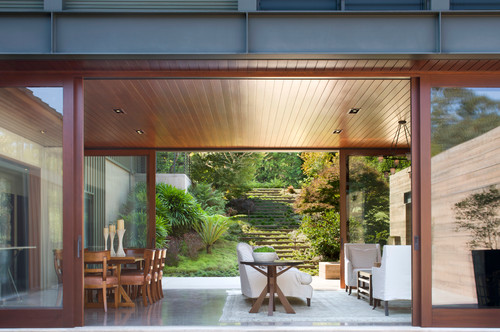
[Image -Kirkpatrick Architects]
This feature not only adds to the beauty of the landscape but also looks aesthetic from inside the house. The risers in the garden are complementing the décor of the house that binds the whole design together.
Keep it simple
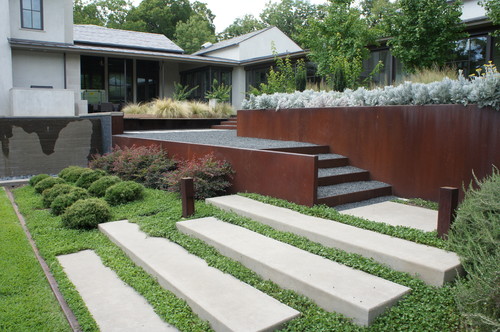
[Image -The Garden Design Studio]
Nothing works better in a design than simplicity. You can let the single species dominate the whole landscape and the step planting. The best planting option for this kind of design is West coast native Dichondra that can neatly grow around concrete steps.
Boxwood Risers
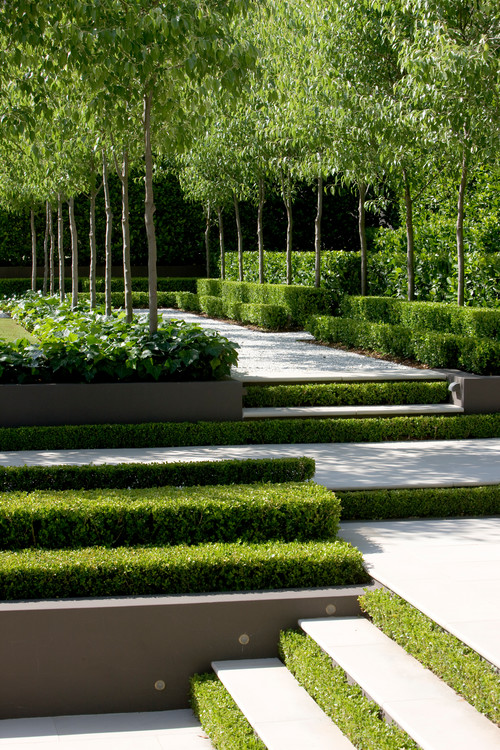
[Image -Peter Fudge Gardens]
If you do not have the option to grow plants in the crevice, you can go for the boxwood riser’s alternative, which looks equally neat. They are a good substitute to the wayward looking crevice plantation and provide uniformity and discipline to the design. However, if you use this kind of theme, you would require to routinely clipping the plants. There is also a risk of fungal disease or discolouring of the foliage, which can kill the entire plantation.
Lawn Plant Steps for Minimal Design
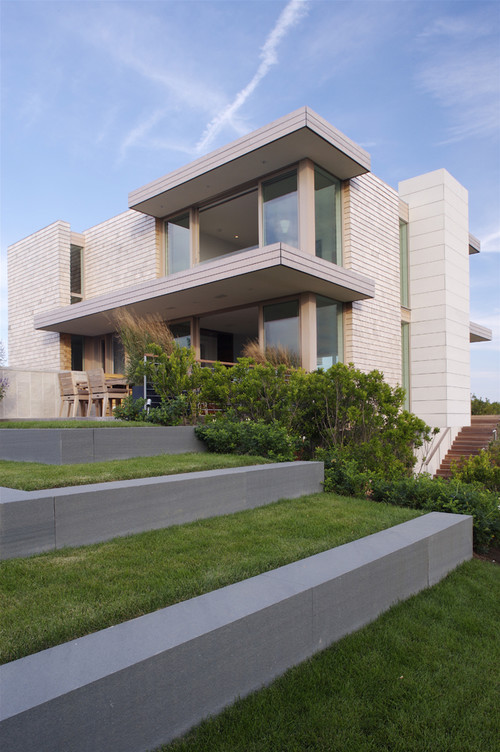
[Image – Stelle Lomont Rouhani Architects]
You can also use the lawn design to soften the steps in your garden. Although it is not quintessentially like the plant steps yet the wide treads and stone risers with lawn grown on them give an appearance of an amphitheatre as the steps come down like an open seating. This is an ideal look for a contemporary house with an additional seating space.
You can also plant these grass steps as meadows. However, the trick is to find the right plant combination and garden mix to make up for heavy foot traffic and porous landscape feature.
Brick Risers with Manicured Grass
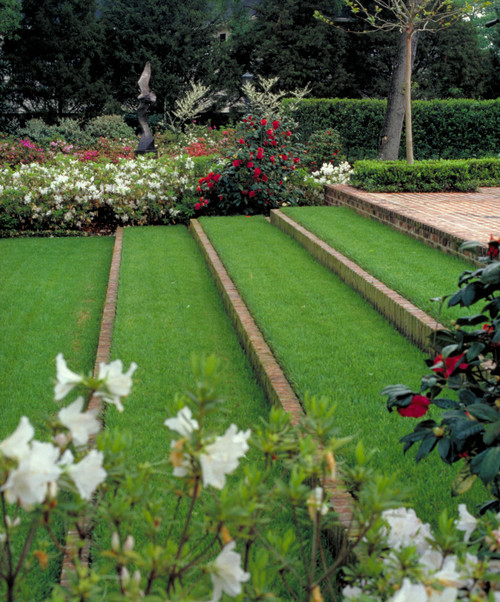
[Image -McDugald-Steele Landscape Architects]
In this image, the steps are grassed and need no additional plantation. The brick risers done perfectly match the immaculately cut grass treads.
Extreme Step Planting
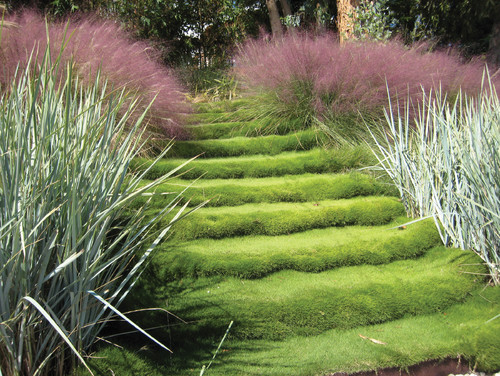
[Image -GEL: Griffin Enright Landscape]
In this image, the designer has used Korean grass and takes step planting to an all new level. Korean grass is capable of withstanding foot traffic and grows naturally slow. You would only need to cut it twice or thrice in a year, which also accounts for low maintenance. It grows with the help of underground runners, which can easily develop into neighbouring borders.
Gone are the days when we used to have normal looking gardens with no exciting feature. However, planting steps are not only a unique concept but also make up for a visually pleasing aspect in your garden.


